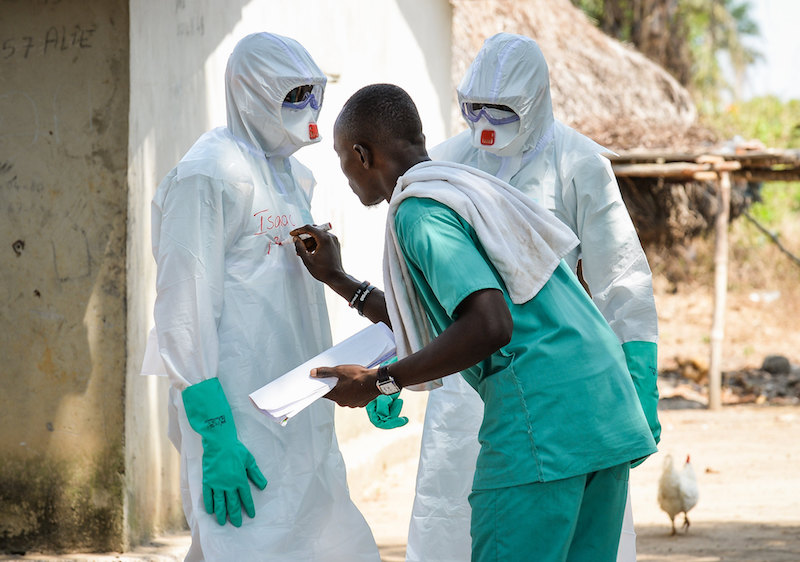Chiara Chiavaroli discusses environmental inequalities and structural factors shaping local experiences of the pandemic in Latin America.
This is the fourth blog in the 12 Days of Global Health series.
Despite being perceived as the first truly “global” pandemic for its impressive reach, the impacts of COVID-19 have been experienced in disproportionately different ways across social, economic ethnic and gendered groups. The capacity of different national health systems is a crucial variable that structured peoples’ vulnerability to the virus. However, beyond the economic and social barriers that marginalised social groups experience when accessing health services, other structural factors have been equally important in shaping local experiences of the pandemic. In particular, environmental inequalities such as uneven access to land and water, determined differential vulnerabilities to the virus and to the lockdown measures implemented by Latin American governments. My PhD project at LSE focuses on the interplay of environmental degradation and women’s health and, in this blog, I will reflect on the rising importance of including environmental injustices in global health research.
In several Latin American countries, uneven land distribution affects the food security of rural and ethnic communities. Land dispossession, the imposition of extensive monocultures and extractive activities in countries such as Brazil, Colombia and Peru, among others, have significantly affected the capacity of these communities to produce crops for their self-sufficiency, pushing farmers, indigenous and Afro-descendant people to migrate to the cities, to enter the informal sector, or to rely heavily on food aids and social protection measures. The lockdown measures implemented by Latin American governments have generated an additional burden for communities that were already exposed to food insecurity in the pre-pandemic, by limiting food exchange among communities, the possibility of small producers to reach the cities in order to sell their products, the circulation of food aids and by drastically affecting the income of people working in the informal sector. This can clearly be observed, for example, in the Colombian department of La Guajira, a territory with a strong presence of indigenous Wayuu people and that has been heavily affected by the civil conflict and by a history of land dispossessions. In this region, the rate of mortality for malnutrition is six times higher than in other Colombian departments and 75% of the households of the region suffer from food insecurity. The lockdown measures imposed by the Colombian government in March 2020, stopped touristic activities in the region, depriving local communities of their main source of income. Moreover, the closure of local schools affected significantly the nutritional health of local children, who rely heavily on school meals to satisfy their nutritional needs.
The lockdown measures implemented by Latin American governments have generated an additional burden for communities that were already exposed to food insecurity in the pre-pandemic
In Latin America, 20.9 million people are estimated to lack access to clean water . The rise of temperature related to climate change has caused severe droughts and a depletion of water resources in the region. Moreover, extractive activities, in particular mining, and the regional switch to clean energy that translated in the construction of hydroelectric dams, generated processes of water grabbing and significant conflicts over water resource. Lack of access to clean water represents a significant source of diseases for marginalised communities and, during the COVID-19 pandemic, water scarcity made impossible to comply with prevention measures suggested by national governments: such as washing hands, disinfecting clothes and food items. The difficulty of implementing prevention measures as well as the pre-existing health conditions associated with the consumption of unclean water, made communities affected by water scarcity significantly more vulnerable to the virus.
In conclusion, what is universal about the COVID-19 pandemic? A look at the different territorial experiences shows that very little universality can be observed in the impacts of the pandemic. Structural inequalities and, in particular, environmental injustices, shape the differential vulnerability of social groups and communities living across different landscapes. By reinforcing these inequalities, the pandemic has raised attention on the significant interplay of health and uneven access to natural resources. Even though COVID-19 may be on its way to be controlled, the health risks associated with environmental degradation caused by an extractivist development model and climate change, remain a priority of future health research. Global health research has never been solely about the analysis of medical institutions, and its sight can now, more than ever, move outside of the traditional medical settings to look at the determinants of health and social justice that are inscribed in the landscape in order to understand the ecological (and political) dimension of vulnerability.
The views expressed in this post are those of the author(s) and in no way reflect those of the Global Health at LSE Blog or the London School of Economics and Political Science.
Photo: Illegal logging on Pirititi indigenous amazon lands with a repository of round logs on May 8, 2018. Credit: Felipe Werneck/Ibama via Flickr via AP. Licensed under creative commons (CC BY-NC-ND 2.0).




